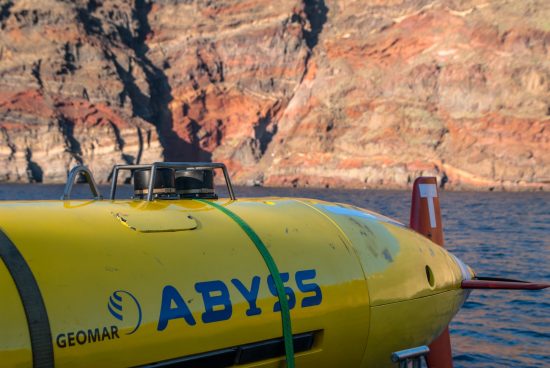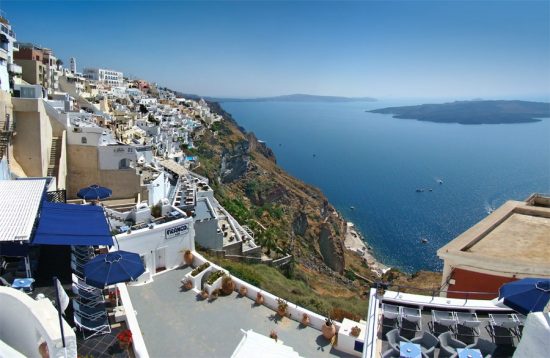



German-Greek research team investigate Santorini's volcanic past
The Santorini archipelago in the
southern Aegean Sea is one of the best spots for an idyllic holiday in
the Mediterranean. However, this does not hide the fact that the
islands have borne witness to massive volcanic eruptions and strong
seismic forces in the past.
On board the research vessel POSEIDON (from the GEOMAR Helmholtz Center
for Ocean Research Kiel), marine scientists from Germany and Greece are
studying the seabed around Santorini to find out more about the dangers
of volcanism in the region.
In Greek mythology, Poseidon is the god of the sea. The earth trembles
and devastating waves are created when he strikes the ground with his
trident. This was how the ancient Greeks explained the occurrence of
natural catastrophes in the Aegean.
Today, we know better. We know that volcanic eruptions and earthquakes
are caused by the African tectonic plate moving beneath the Aegean
microplate at about four centimetres a year. Still, many questions
about such processes in the seabed remain unanswered.
In an attempt to find out more, the research vessel POSEIDON (aptly
named after the mythological god) has been deployed to the southern
Cyclades Islands to gather more information. After its first mission,
the scientific crew changed in Heraklion (Crete) last weekend before
heading back to Santorini.
Together with researchers from the National and Kapodistrian University
of Athens, the scientists from Kiel are investigating the history of
volcanic activity around the island group. This is of great scientific
interest because the present-day islands are what remains after what
was possibly the largest volcanic eruption of the past 10,000 years.
The eruption took place around 1600 BC, and is linked to the end of the
Minoan culture. Volcanoes on Santorini and in the surrounding area are
still active today.
The research had started at the beginning of March. During the
expedition that spanned three and a half weeks, the autonomous
underwater vehicle (AUV) ABYSS was deployed in the waters east of
Santorini. It mapped nearly 100 square kilometres of the seabed in
search of traces of previous tectonic activity and underwater volcanic
eruptions. It also measured the active underwater volcano Kolumbo at a
level of accuracy never before achieved.
“These processes have been acting on
the region for millions of years, and some of the fine structures that
we can now see in the AUV maps tell us a great deal about the possible
future evolution of the volcanoes”,” said Prof. Dr. Mark Hannington from GEOMAR.
This April, the second team, led by GEOMAR's Dr. Jörg Geldmacher, will
collect samples of volcanic rocks from the steep underwater cliffs of
Santorini with the remote-controlled dive robot ROV PHOCA. This will be
done over the next three weeks, and is expected to yield much
information about the early history of the volcanoes and the evolution
of the magma.
“The ROV will also be used to take
thousands of photos for the first high-resolution photomosaics of the
volcanoes. With these data, we can produce precise 3D-models of the
seafloor,” said Dr. Geldmacher.
Then, in May, Dr. Armin Freundt from GEOMAR will lead a two-week
expedition to extract cores of deep-sea sediments that contain a record
of highly explosive eruptions that had taken place in the last 160,000
years. These samples will help to quantify the hazards from past
eruptions to serve as a gauge of the risk from future volcanic activity.
Further information
 Mares
Mares 18th April 2017
18th April 2017 Santorini Island, Santorin, Thira, Griechenland
Santorini Island, Santorin, Thira, Griechenland